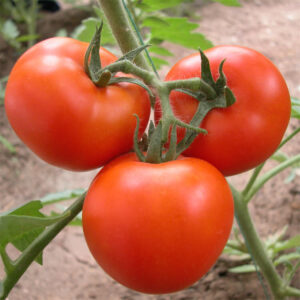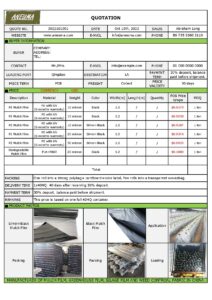Table of Contents
Introduction
Attention growers, are you ready to elevate your crop cultivation to a whole new level? Dive into the fascinating world of greenhouse film selection, where the art of matching film characteristics to your cherished plants unfolds. Imagine a world where your crops thrive under the perfect canopy, where light diffusion, temperature control, and durability align with your crop’s needs. In this journey, we’ll explore how the right choice of greenhouse film can turn your cultivation into an art form. Get ready to unlock the secrets that will not only capture your interest but also leave you with the desire to revolutionize your crop yield. Your green oasis awaits!

Understanding Greenhouse Films
Types of Greenhouse Films
- Polyethylene Films: Widely used for their cost-effectiveness and versatility, polyethylene films come in various thicknesses and additives, making them suitable for different crops and climates.
- Polycarbonate Films: Known for their durability and insulation properties, polycarbonate films are ideal for crops that require consistent temperature and light control.
- ETFE Films: Ethylene Tetrafluoroethylene films offer exceptional light transmission and are particularly useful for year-round cultivation of high-value crops.
Key Film Characteristics
- Light Transmission: Different crops require different light levels for optimal growth. Some need direct sunlight, while others thrive in diffused light conditions. Film choice should align with these requirements.
- Thermal Properties: Temperature control is crucial. Film thickness and properties influence heat retention and dissipation, impacting crop health.
- Durability and Longevity: Greenhouse films must withstand environmental factors like UV exposure and hail. Investing in durable films can save costs in the long run.

Matching Films to Crops
Warm-Season Crops
- Tomatoes and Peppers: These sun-loving crops benefit from high light transmission films with good UV protection.
- Cucumbers and Melons: Crops like cucumbers thrive with diffused light, making ETFE films an excellent choice.
Cool-Season Crops
- Lettuce and Spinach: These cool-weather crops prefer diffused light, making polycarbonate films suitable.
- Broccoli and Cauliflower: Crops that endure cooler temperatures may benefit from films with better heat retention.
Year-Round or Specialty Crops
- Orchids and Tropical Plants: These exotic species require precise climate control, often favoring polycarbonate or ETFE films.
- Herbs and Microgreens: Quick-growing herbs and microgreens may benefit from the versatility of polyethylene films.
Considerations for Specific Climate Zones
Cold Climates: Films with excellent insulation properties are essential to retain warmth.
Hot and Arid Climates: UV-resistant films that allow for controlled heat dissipation are crucial.
Humid Climates: Anti-condensation films can help mitigate excess moisture that can lead to fungal issues.
Sustainability and Environmental Impact
In the realm of modern agriculture, sustainability is not just a buzzword; it’s a driving force. For growers, conscientious choices extend beyond crop selection and farming practices to encompass the very materials that facilitate their cultivation. This includes the critical element of greenhouse films.
One key aspect of sustainability is the use of films that prioritize light diffusion. This seemingly small detail has a significant impact. Films that scatter and diffuse sunlight more evenly across crops not only enhance growth but also reduce the need for artificial lighting, saving energy and lowering operational costs.
The environmental implications are profound. Reduced energy consumption leads to a diminished carbon footprint, aligning with the goals of eco-conscious growers. Moreover, by choosing materials that prioritize sustainability, such as recyclable or biodegradable films, growers can further mitigate their environmental impact.
In summary, the choice of greenhouse films is not just a matter of practicality but a statement of commitment to sustainable agriculture. By opting for films that enhance light diffusion and embracing eco-friendly alternatives, growers are at the forefront of a greener, more environmentally responsible farming future.

Conclusion
The selection of the right greenhouse film is an art and a science. Matching film characteristics to crop needs is vital for successful cultivation. It not only ensures healthy plants but also contributes to efficient resource utilization and environmental sustainability in modern agriculture.

